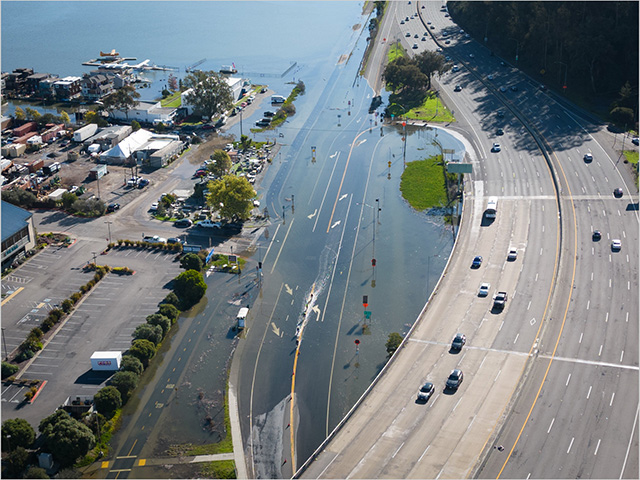Getting Started with NASA Earth Science Data Resources
For more than 30 years, NASA’s Earth Observing System Data and Information System (EOSDIS) has provided free and open long-term measurements of our dynamic planet. The thousands of unique data products in the EOSDIS collection advance our understanding of Earth’s interrelated systems. These data come from the International Space Station, satellites, airborne campaigns, field campaigns, in situ instruments and model outputs. EOSDIS supports NASA’s Earth science program by processing, storing and distributing these data to a global user community for interdisciplinary use. New and ongoing NASA missions will add significant amounts of Earth science data into EOSDIS each year that will continue to be available for free – providing an invaluable resource for scientific discovery. The Earthdata website provides comprehensive information about NASA’s Earth Science Data Systems (ESDS) program, and EOSDIS data, information, services and tools. https://earthdata.nasa.gov
-
Data Discovery and Data Access
Find information, tutorials, data tools and recipes, webinars, and other learning resources to help you find, access, and use NASA Earth science data at https://earthdata.nasa.gov/learn/user-resources.
-
LANCE
NASA’s LANCE provides near real-time EOS data and imagery from 10 instruments (see table). LANCE provides timely products to meet the needs of scientists and application users interested in monitoring a wide variety of natural and man-made phenomena. LANCE products are used for monitoring fires, dust storms, hurricanes, air quality, sea ice, vegetation and crop development and volcanic eruptions. https://earthdata.nasa.gov/earth-observation-data/near-real-time
-
The NASA Fire Information for Resource Management System (FIRMS)
NASA FIRMS delivers global Terra and Aqua Moderate Resolution Imaging Spectroradiometer (MODIS) and Suomi- NPP and NOAA-20 Visible Infrared Imaging Radiometer Suite (VIIRS) hotspots/ fire locations in easy-to-use formats. The active fire locations represent the center of 1km (MODIS) and 375m (VIIRS) pixels that are flagged by NASA’s Fire and Thermal Anomalies algorithms as containing one or more hotspots/fires within the pixels. Free near real-time email alerts of hotspots/fires for user specified area of interest. These alerts are also available as daily or weekly summaries. https://earthdata.nasa.gov/firms
-
Earthdata Search
Earthdata Search is a data discovery and data access portal for more than 33,000 Earth Observation data collections from NASA’s Earth Observing System Data and Information System (EOSDIS), as well as U.S and international agencies across the Earth science disciplines. Users (including those without specific knowledge of the data) can search for and read about data collections, search for data files by date and spatial area, preview browse images, and download or submit requests for data files, with customization for select data collections. Discover and access data: https://search.earthdata.nasa.gov/search
-
NASA's Earth Observing System Data and Information System (EOSDIS)
NASA's Earth Observing System Data and Information System (EOSDIS) is designed as a distributed system, with major facilities at NASA's Distributed Active Archive Centers (DAACs) located throughout the United States. These institutions are custodians of EOS mission data and ensure that data will be easily accessible to users. EOSDIS DAACs process, archive, document, and distribute data from NASA's past and current Earth-observing satellites and field measurement programs. Acting in concert, the DAACs provide reliable, robust services to users whose needs may cross the traditional boundaries of a science discipline, while continuing to support the particular needs of users within the discipline communities. https://earthdata.nasa.gov/eosdis/daacs
-
Data Recipes and Tutorials
Data recipes are tutorials that include step-by-step instructions to help users learn how to discover, access, subset, visualize and use Earth science data, information, tools and services. These tutorials cover many different data products across the Earth science disciplines and different data discovery and data access tools, including programming languages and related software. https://earthdata.nasa.gov/learn/user-resources/webinars-and-tutorials
-
Cloud Computing
With the impending arrival of new, high-data-volume missions, the need to effectively archive and process significantly larger data volumes requires new data management technologies and architectures that are more cost-effective, flexible, and scalable than traditional on-premises systems. To meet these needs, the ESDS Program has adopted a strategic vision to develop and operate multiple components of the EOSDIS in a commercial cloud environment. Access cloud computing resources: https://earthdata.nasa.gov/cloud
-
NASA Worldview
The NASA Worldview imagery mapping and visualization application provides the capability to interactively browse over 1,000 global, full-resolution satellite imagery layers. Many of these layers are updated daily and are available within three hours of observation. Also available are geostationary imagery layers which are provided in ten-minute increments for the last 30 days. Explore NASA Worldview at https://worldview.earthdata.nasa.gov
-
Earth Science Data Systems GIS Team (EGIST)
EGIST provides sustained support to enable the appropriate use and adoption of geographic information system (GIS) technology in support of Earth science research and applied science for Earth Observing System Data and Information System (EOSDIS) data. EGIST serves as the subject matter expert for GIS to ESDS Program components, provides guidance, evaluates GIS technology, and engages the community in developing Program-wide strategy. https://earthdata.nasa.gov/esds/egist
-
Interagency Implementation and Advanced Concepts Team (IMPACT)
IMPACT prototypes the latest technologies to support new science and applications from Earth observation data. IMPACT’s three focus areas are interagency collaboration, assessment and evaluation, and advanced concepts. https://earthdata.nasa.gov/esds/impact
-
Commercial Smallsat Data Acquisition (CSDA) program
CSDA identifies, evaluates, and acquires data from commercial sources that support NASA’s Earth science research and application goals. The scientific community may use commercial datasets that are acquired by NASA for scientific purposes in adherence to vendor-specific terms and conditions. Information about these vendors, user licenses, and data is available through CSDA. https://earthdata.nasa.gov/esds/csdap
-
Citizen Science for Earth Systems Program (CSESP)
CSESP is focused on developing and implementing projects that harness contributions from members of the general public to advance our understanding of Earth as a system. The Citizen Science for Earth Science Data Working Group provides guidance on topics related to standards for Earth science citizen science project data, software, tools, and citizen engagement and represents the broad needs of the Earth science and citizen science user communities. https://earthdata.nasa.gov/esds/competitive-programs/csesp













